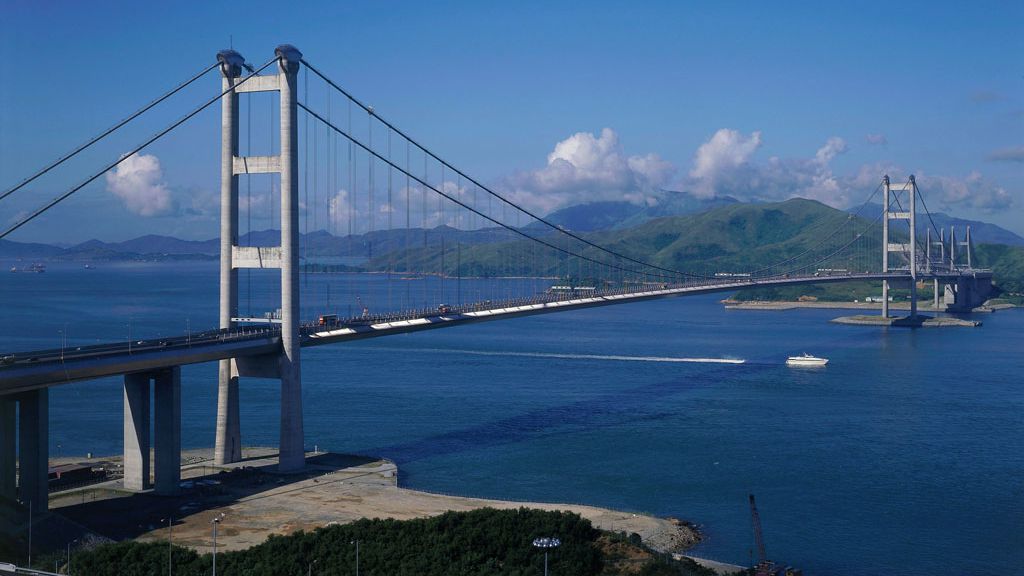Hong Kong's Harbor Bridge is Taller Than Charts Suggest

Hong Kong shipping interests have lobbied the city-state's maritime authorities for years to raise the air draft restriction on the Tsing Ma Bridge, the mile-long span over Ma Wan Channel. Regulators say that the bridge deck is about 203 feet above the water, but marine traffic is restricted to a height of 174 feet, limiting the size of the container vessels that can call Hong Kong. Today's 18,000 TEU ships typically need about 190 feet of clearance, and with a huge safety margin in place, it isn't legal to bring them under the bridge – even with special permission.
But this generous safety gap may actually be much bigger. The Hong Kong Liner Shipping Association recently commissioned consulting firm BMT Asia-Pacific to study the economic impact of the bridge's air draft restrictions. Along the way, BMT measured the height of the bridge deck and found something unusual: it appears that the span is actually 230 feet above the water – suggesting that Hong Kong's regulators have been using an incorrect value to set policy for decades. If BMT is correct, the existing 30-foot safety margin is really a 55-foot safety margin – a big difference, especially when the margins at many tall bridges are in the range of 12 to 15 feet.
The height error alone would be more than enough to accommodate the extra air draft required by ULCVs. However, the SCMP reports that despite the new report, Hong Kong's Marine Department has not yet moved to re-survey the bridge and update its navigational requirements. “The Marine Department is responsible for the accuracy of the information on local charts and it is clearly incorrect,” said Martin Cresswell, technical director of the Hong Kong Shipowners Association.
While the news is frustrating to the many ship operators who are not allowed to use larger vessels in Hong Kong, it is also an opportunity: any port would be delighted to find that its old harbor bridge is actually tall enough for modern ships. Bridge spans can take a decade and billions of dollars to replace, but regulations can be rewritten at relatively low cost (with enough political will).
